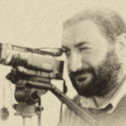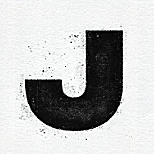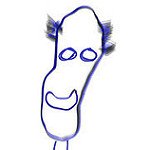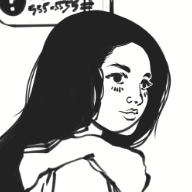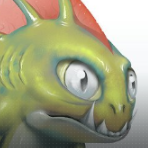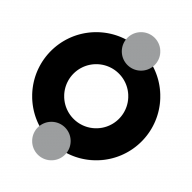-
Posts
482 -
Joined
Reputation Activity
-
 Bryan Rieger reacted to Patrick Connor in 2.6 or 2.5.6 beta when?
Bryan Rieger reacted to Patrick Connor in 2.6 or 2.5.6 beta when?
Nope, this is just absolute spam...
Going off topic is allowed if the original issue has been addressed to the satisfaction of the OP... in this case the OP has not returned and all the rest is irrelevant noise.
No wonder I (and others who PM me about this) rarely come here anymore.
-
 Bryan Rieger reacted to NathanC in AD: Getting rid of nodes in curves
Bryan Rieger reacted to NathanC in AD: Getting rid of nodes in curves
We have some historical reports logged of user files encountering paths 'collapsing' when using the smooth curves function as well as a more specific report on curve sections being removed entirely. I've created a quick sample file comprised of straight paths I am also observing these same failures shown in the recording and screenshot. The function does certainly have room for much improvement so i'll log this with the developers.
Ideally a 'Simplify Path' function similar to illustrators would be beneficial in this scenario so hopefully it will be considered in a future version as it is a popular request.
-
 Bryan Rieger reacted to PaoloT in Flowing tables!? When?!
Bryan Rieger reacted to PaoloT in Flowing tables!? When?!
In any case, now that we have spirals, there is hope for tables! 😁
-
 Bryan Rieger got a reaction from PaoloT in When can we buy a copy of Affinity Suite V3?
Bryan Rieger got a reaction from PaoloT in When can we buy a copy of Affinity Suite V3?
As it currently stands with all of the missing features and mounting bugs in v2, I won't be upgrading to v3.
If v2 begins to see real, positive, and consistent change in the coming months, then I'd be more optimistic about v3. Without it, a very hard pass.
-
 Bryan Rieger reacted to garrettm30 in Do you believe that a "Notes Window" is necessary?
Bryan Rieger reacted to garrettm30 in Do you believe that a "Notes Window" is necessary?
This would personally be my preferred approach (don’t forget “non-exportable”).
I already leave off-canvas notes along the text where it is needed. I don’t see a separate notes panel as necessarily bad or useless, but I think it might risk being overlooked in my way of working: I would make complex notes about a document, come back later, and forget to even open the notes panel. And I often benefit from notes sticking with the part of the document I am leaving the note about. For such cases, sometimes I even pin the off-canvas note to some relevant text. I don’t think a separate notes panel would be the best solution for such needs.
And it might need to be mentioned that the terminology “Notes panel” is already taken, where it refers to the panel that manages footnotes, endnotes, and sidenotes.
-
 Bryan Rieger got a reaction from dominik in Do you believe that a "Notes Window" is necessary?
Bryan Rieger got a reaction from dominik in Do you believe that a "Notes Window" is necessary?
I usually keep a notes.txt file next to my project file (one notes.txt per project) and keep it open while I work. I find it works better than file or app specific notes, as most projects require a number of files and apps, and may contain content that is relevant to a number of areas of work. That's not to say I wouldn't like notes in the Affinity Suite, but I'd much rather have them implemented as non-printing objects that are managed through their own layer. That way can I not only place them where they need to be, but also toggle them on and off as required. Bonus points if others could leave notes and comments (via a cross-platform web interface + Affinity apps not required to leave comments) that could be synced in 'close to real time' with my document(s).
Short answer: no, I don't believe that a "Notes Window" is necessary.
-
 Bryan Rieger reacted to loukash in Do you believe that a "Notes Window" is necessary?
Bryan Rieger reacted to loukash in Do you believe that a "Notes Window" is necessary?
So do I, since decades. But I, for one, prefer independent solutions. Since I have programmed a custom FileMaker office application a couple of years ago that can do almost everything from time tracking over sending invoices up to calculating my income tax, my project notes are now part of it. (No, it can't boil my tea water yet…)
I used to use The Hit List app which was pretty good while it lasted, but it hasn't been updated in many years, and its time tracker was too rudimentary for my needs.
Also, Affinity apps already have quite a few options to leave notes, e.g. via Preflight or Metadata. Both of which I'm using.
So rather than a Notes panel, I'd prefer to see a "non-printable" attribute being added, so that we could leave visible but non-printable/non-exportable notes on pages and the like.
-
 Bryan Rieger got a reaction from Juhani in Can Vector brushes be vector brushes?
Bryan Rieger got a reaction from Juhani in Can Vector brushes be vector brushes?
Sadly we (the users) have no idea, as it's been this way for almost 10 years (since v1.0), and there's been no indication that this is going to change. 😣
-
 Bryan Rieger got a reaction from HCl in Do you believe that a "Notes Window" is necessary?
Bryan Rieger got a reaction from HCl in Do you believe that a "Notes Window" is necessary?
I usually keep a notes.txt file next to my project file (one notes.txt per project) and keep it open while I work. I find it works better than file or app specific notes, as most projects require a number of files and apps, and may contain content that is relevant to a number of areas of work. That's not to say I wouldn't like notes in the Affinity Suite, but I'd much rather have them implemented as non-printing objects that are managed through their own layer. That way can I not only place them where they need to be, but also toggle them on and off as required. Bonus points if others could leave notes and comments (via a cross-platform web interface + Affinity apps not required to leave comments) that could be synced in 'close to real time' with my document(s).
Short answer: no, I don't believe that a "Notes Window" is necessary.
-
 Bryan Rieger reacted to Kirk wood in Excuses Excuses, we need an android version of your application
Bryan Rieger reacted to Kirk wood in Excuses Excuses, we need an android version of your application
Please stop making excuses and make the android version already. Just like every other software developer just chose an device manufacturer and make the app for that device, it’s not rocket science, it’s common sense, I would recommend google or Samsung,
just start the rest will work it self out.
but if all you do is make excuses then you will never get anything done.
We all keep saying we don’t expect you all to get it right for a while but something is better than nothing.
-
 Bryan Rieger got a reaction from Old Bruce in We need Affinity Video!
Bryan Rieger got a reaction from Old Bruce in We need Affinity Video!
I'd just like some of the long-standing bugs resolved, and the overall UI/UX improved in the existing apps before even considering plowing headfirst into any new apps.
-
 Bryan Rieger got a reaction from lepr in We need Affinity Video!
Bryan Rieger got a reaction from lepr in We need Affinity Video!
I'd just like some of the long-standing bugs resolved, and the overall UI/UX improved in the existing apps before even considering plowing headfirst into any new apps.
-
 Bryan Rieger got a reaction from Rudolphus in Do you believe that a "Notes Window" is necessary?
Bryan Rieger got a reaction from Rudolphus in Do you believe that a "Notes Window" is necessary?
I usually keep a notes.txt file next to my project file (one notes.txt per project) and keep it open while I work. I find it works better than file or app specific notes, as most projects require a number of files and apps, and may contain content that is relevant to a number of areas of work. That's not to say I wouldn't like notes in the Affinity Suite, but I'd much rather have them implemented as non-printing objects that are managed through their own layer. That way can I not only place them where they need to be, but also toggle them on and off as required. Bonus points if others could leave notes and comments (via a cross-platform web interface + Affinity apps not required to leave comments) that could be synced in 'close to real time' with my document(s).
Short answer: no, I don't believe that a "Notes Window" is necessary.
-
 Bryan Rieger got a reaction from PaoloT in We need Affinity Video!
Bryan Rieger got a reaction from PaoloT in We need Affinity Video!
I'd just like some of the long-standing bugs resolved, and the overall UI/UX improved in the existing apps before even considering plowing headfirst into any new apps.
-
 Bryan Rieger got a reaction from JoshB in Canva
Bryan Rieger got a reaction from JoshB in Canva
So I'm gonna pipe in with what is very likely an unpopular opinion here to try and balance things out.
Before the acquisition of Affinity by Canva my only experience with Canva was having to prepare assets for others to use, as well as provide a little art direction for folks from various disciplines; social media, marketing, community orgs, etc. Every time I logged into Canvas I cringed, and I made a point of spending as little time as possible there.
After the acquisition I decided to dig a little deeper into Canva; the product, the company, and the community. I tried to approach it with an open mind, and without all the years of baggage I have of using 'professional' design tools. Here's my takeaways:
The Product
I decided to take Canva up on their offer of a free 30 day Pro trial, rather than just use the free version. This includes things such as custom fonts, branding kits, resizing and translation of designs, and the ability to schedule social content (among other goodies). The (old) interface took a little getting used to as it was very simple, BUT something about it reminded me of using Apple's Keynote (especially the new interface). I LOVE Keynote in that it doesn't overwhelm you with features, but it still enables you to achieve impressive results. And it's FUN to use. For me, Canva has this same feel. It's fun. It might not be packed with 'professional' features, but it is very easy to quickly create something that looks good—even without using the avalanche of available templates or elements. Will it replace Affinity (or Adobe) for me, no, but it is an app that I am definitely going to add to my toolkit. After using it for the past month I have to say I can see why it is so beloved by its community. I hope Canva can help bring some of this 'fun' user experience to the Affinity apps. Not dumbing them down, but rather adding those little touches that delight and engage.
The Company
Now I've developed a general distrust of all tech companies in recent years, and I approached Canva with the same trepidation. I watched the Canva Create Musical, and to be honest I've seen worse (recent Adobe and Apple events come to mind). The thing I liked about it was that it didn't take itself too seriously, and it was instilled with the same FUN that I've come to know in the app itself. I'm also really impressed by their philanthropy, environmental initiatives, and their commitment to provide Canva and Affinity for free to non-profits and education. The last one is HUGE, and so important.
The Community
So this is the bit that blew me away. Canva is LOVED by its community, and (judging by social media interactions) Canva loves its community. So many folks around the world have used Canva to help create and run their businesses, community projects, side-hustles, hobbies, and freelance projects. It has enabled these people like no other tool has, and there are entire cottage industries built around Canva to provide templates, training, tutorials, artwork, consulting, etc. The fact that it's gaining traction in the enterprise is no surprise as folks will often initially use the tools they already know personally long before corporate purchasing enters the picture (see Slack, GitHub, etc). For marketing, growth and social media departments Canva is a no-brainer, especially if you're working with a team.
The Opportunity
So, essentially I've come away from this experiment with a new app in my toolkit. One that is fun and easy to use. One that is developed by a company with values that I'm generally aligned with (the AI stuff, not so much - but EVERYBODY is doing it for the moment), and one with a massive community that is fanatical about the product. For me, I see this as a massive opportunity to find ways to work with orgs and enterprises using Canva, creating bespoke assets/illustrations, branding kits, and templates (using the Affinity apps), and providing design training and consulting/art direction.
Anyway, if you've read all the way to here - thank you. I easily could have written pages and pages, but I hope these few paragraphs provide some insight into my experience and perspective of Canva since the acquisition.
Change is hard, but it's also an opportunity.
-
 Bryan Rieger got a reaction from MmmMaarten in Would it make sense to make 2.6 a pure, extensive, QA bug-fix-only release?
Bryan Rieger got a reaction from MmmMaarten in Would it make sense to make 2.6 a pure, extensive, QA bug-fix-only release?
This is where I'm at with the Affinity apps as well. They work for a very specific usecase/workflow I have, but I certainly wouldn't rely on them as a complete replacement for 'those other tools', especially if your business depends on them. At the end of the day I generally enjoy using the Affinity suite (warts, bugs, poor UX and all) over alternatives where possible.
For me, the Affinity suite is just another set of tools, not a revolution "setting the new industry standard in the world of design" as some marketing folks would have you believe .
-
 Bryan Rieger got a reaction from MmmMaarten in Would it make sense to make 2.6 a pure, extensive, QA bug-fix-only release?
Bryan Rieger got a reaction from MmmMaarten in Would it make sense to make 2.6 a pure, extensive, QA bug-fix-only release?
I wonder how many Adobe users have begun trialing/using Affinity in the past week and run into not only UX/UI issues, but also significant bugs? It's wonderful that so many people are now discovering the Affinity apps, but if their first impressions are one of bug-ridden confusion and stability issues, I can't imagine they'll stick around for long—if not write them off entirely.
Acquiring new customers is hard. Getting them to take a second look is even harder.
If Canva really bought Affinity with the intent to appeal to professional users, these long-standing issues aren't going to do much to help the cause.
It would be a shame to lose them (potentially forever) due to a less than stellar user experience.
-
 Bryan Rieger got a reaction from Alfred in Would it make sense to make 2.6 a pure, extensive, QA bug-fix-only release?
Bryan Rieger got a reaction from Alfred in Would it make sense to make 2.6 a pure, extensive, QA bug-fix-only release?
This is where I'm at with the Affinity apps as well. They work for a very specific usecase/workflow I have, but I certainly wouldn't rely on them as a complete replacement for 'those other tools', especially if your business depends on them. At the end of the day I generally enjoy using the Affinity suite (warts, bugs, poor UX and all) over alternatives where possible.
For me, the Affinity suite is just another set of tools, not a revolution "setting the new industry standard in the world of design" as some marketing folks would have you believe .
-
 Bryan Rieger got a reaction from debraspicher in Would it make sense to make 2.6 a pure, extensive, QA bug-fix-only release?
Bryan Rieger got a reaction from debraspicher in Would it make sense to make 2.6 a pure, extensive, QA bug-fix-only release?
This is where I'm at with the Affinity apps as well. They work for a very specific usecase/workflow I have, but I certainly wouldn't rely on them as a complete replacement for 'those other tools', especially if your business depends on them. At the end of the day I generally enjoy using the Affinity suite (warts, bugs, poor UX and all) over alternatives where possible.
For me, the Affinity suite is just another set of tools, not a revolution "setting the new industry standard in the world of design" as some marketing folks would have you believe .
-
 Bryan Rieger got a reaction from ronnyb in Would it make sense to make 2.6 a pure, extensive, QA bug-fix-only release?
Bryan Rieger got a reaction from ronnyb in Would it make sense to make 2.6 a pure, extensive, QA bug-fix-only release?
This is where I'm at with the Affinity apps as well. They work for a very specific usecase/workflow I have, but I certainly wouldn't rely on them as a complete replacement for 'those other tools', especially if your business depends on them. At the end of the day I generally enjoy using the Affinity suite (warts, bugs, poor UX and all) over alternatives where possible.
For me, the Affinity suite is just another set of tools, not a revolution "setting the new industry standard in the world of design" as some marketing folks would have you believe .
-
 Bryan Rieger got a reaction from Frozen Death Knight in REDESIGNED LAYERS TAB
Bryan Rieger got a reaction from Frozen Death Knight in REDESIGNED LAYERS TAB
Hi @Luca Ippoliti I'm not pointing to your (or anyone's) ego or aesthetic choices. I'm referring to things that I've seen influence UI/UX design in my 25+ year career as a software and product designer. Please don't feel attacked, as that was not my intention. This is feedback based on my own extensive experience.
Yes, drop-shadows and tonal/brightness changes can infer a sense of depth, but your mock-up creates problems with regards to legibility and are also very difficult to quickly scan in order to orient yourself within the layers stack.
Radical change is rarely useful in UI/UX design. An intentioned and measured approach that improves the overall experience gradually allows the team to learn what works (and what doesn't) as they progress, whereas a radical change introduces too many variables to adequately measure impact, often resulting in poor subsequent decisions being made on incomplete or incorrect knowledge. It's often useful when you're creating something that's completely new (at least in the initial stages), but not terribly helpful when a more considered and iterative approach is necessary.
Please feel free to post ideas, but also realize that you're not the first to do so in these forums. We tend to get a fairly regular influx of radical ideas here.
-
 Bryan Rieger got a reaction from bbrother in REDESIGNED LAYERS TAB
Bryan Rieger got a reaction from bbrother in REDESIGNED LAYERS TAB
Personally, I find this design very difficult to scan, illegible (the contrast is worse than it already is in the apps), and ultimately confusing. Not sure what you're doing with folders, arrows and contrast/depth, but honestly, I can't make heads or tails of it.
I'm hoping that with the new UX designer at Serif/Affinity things will start to improve based on the use of common patterns, accepted standards, adherence to OS guidelines, and formal user testing and research. Not design by committee, individual ego, or what someone thinks is 'cool'.
-
 Bryan Rieger reacted to debraspicher in Affinity does not provide quality, it is time to part with Serif.
Bryan Rieger reacted to debraspicher in Affinity does not provide quality, it is time to part with Serif.
I'm much more surprised it took @bbrother as long as it did to reach this point. Just because the lack of reciprocation and ownership on Serif's part has been so terrible.
-
 Bryan Rieger got a reaction from loukash in REDESIGNED LAYERS TAB
Bryan Rieger got a reaction from loukash in REDESIGNED LAYERS TAB
Hi @Luca Ippoliti I'm not pointing to your (or anyone's) ego or aesthetic choices. I'm referring to things that I've seen influence UI/UX design in my 25+ year career as a software and product designer. Please don't feel attacked, as that was not my intention. This is feedback based on my own extensive experience.
Yes, drop-shadows and tonal/brightness changes can infer a sense of depth, but your mock-up creates problems with regards to legibility and are also very difficult to quickly scan in order to orient yourself within the layers stack.
Radical change is rarely useful in UI/UX design. An intentioned and measured approach that improves the overall experience gradually allows the team to learn what works (and what doesn't) as they progress, whereas a radical change introduces too many variables to adequately measure impact, often resulting in poor subsequent decisions being made on incomplete or incorrect knowledge. It's often useful when you're creating something that's completely new (at least in the initial stages), but not terribly helpful when a more considered and iterative approach is necessary.
Please feel free to post ideas, but also realize that you're not the first to do so in these forums. We tend to get a fairly regular influx of radical ideas here.
-
 Bryan Rieger got a reaction from Alfred in REDESIGNED LAYERS TAB
Bryan Rieger got a reaction from Alfred in REDESIGNED LAYERS TAB
Same problem. Everything in the group is essentially illegible (too little contrast). I would suggest that you don’t change the brightness/contrast, opacity, or size of the layers. Also keep in mind users can change the brightness/contrast of the UI in the app preferences. By further modifying it in this way you are assuring that it will be completely illegible for a significant number of users.



